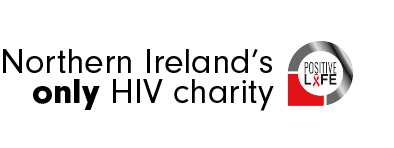
Safer Sex
One of the ways in which HIV can be transmitted is through having unprotected anal or vaginal sex where one partner is HIV+. This is because HIV is found in high quantities in semen, as well as in blood. While vaginal secretions carry lower levels of HIV, there can still be enough virus for transmission. The virus cannot pass through intact external skin, however it can enter through the delicate skin of the vaginal walls as well as the skin on the head of the penis.
‘Safer Sex’ is a term used to describe all sexual activities that do not allow the HIV partner’s blood, semen, or fluid from the vagina to get inside the other partner’s body. A condom can act as a barrier between the penis and the other person’s body, stopping exposure to fluids

Using Condoms
Research tells us that condoms are around 95% effective in reducing the risks of HIV transmission. The main reason why condoms, and femidoms, fail is because they are used wrongly. Some couples, in weighing up the risks, choose to give up penetrative sex in favour of other kinds of sexual activities, e.g. massage, mutual masturbation, using sex toys such as vibrators without sharing them, body to body rubbing etc. Others choose to keep on having penetrative sex with careful and consistent condom use.

Basic guidelines for condom use are:
- Practice and be prepared.
- Use water-based lubricant not oil-based lubricant.
- Look after the condom. Be careful of tearing, using old condoms, leaving space or air in the condom or not using enough lubricant.
- Unroll the condom right to the base of the penis after it is hard, and before penetration
- When pulling out, hold the condom tight to the base of the penis to avoid leaks.
- NEVER re-use a condom.
Remember, you can contact us in confidence if you need some of our safer sex packs.

Oral sex
Although oral sex is less risky than anal or vaginal sex without a condom, there are some factors which could increase the likelihood of HIV transmission –
- Taking semen or vaginal fluids, including menstrual fluid, into the mouth;
- Bleeding gums, cuts or sores in the mouth;
- Inflammation caused by throat allergies, infections etc.;
For oral sex, some people prefer to use condoms or dental dams (a small square of rubber placed between the vulva or anus and mouth).


Relationships

On learning of a partner’s positive diagnosis, there is usually a process of re-assessment and taking stock. Some people feel threatened and unsure of the relationship. In some situations, partners may initially have worries over their own state of health and HIV status. When trying to determine whether a person has been at risk, either within a current relationship or beyond, it is important to become aware of the facts about HIV transmission.
In general there is much misinformation around and it is useful to gain accurate and up to date information on HIV, transmission and safer sex. While some people choose not to pursue a relationship with a partner who is living with HIV, many have found that HIV does not prevent the relationship deepening into one which is mutually rewarding, satisfying and supportive.
In the longer term, partners of people living with HIV can have particular concerns. The most common of those include worry about the person’s health, fears for the future or the pressure of having to keep the diagnosis a secret from others.
Although you might feel reluctant at first to contact Positive Life to talk about your situation, it may well help to do so. Remember this help and support is provided on a confidential basis. In addition, some support services can provide partners with an opportunity to meet and talk with others in a similar situation, which will often help dispel many of their concerns -– contact a member of Positive Life’s team here for more information.
.





